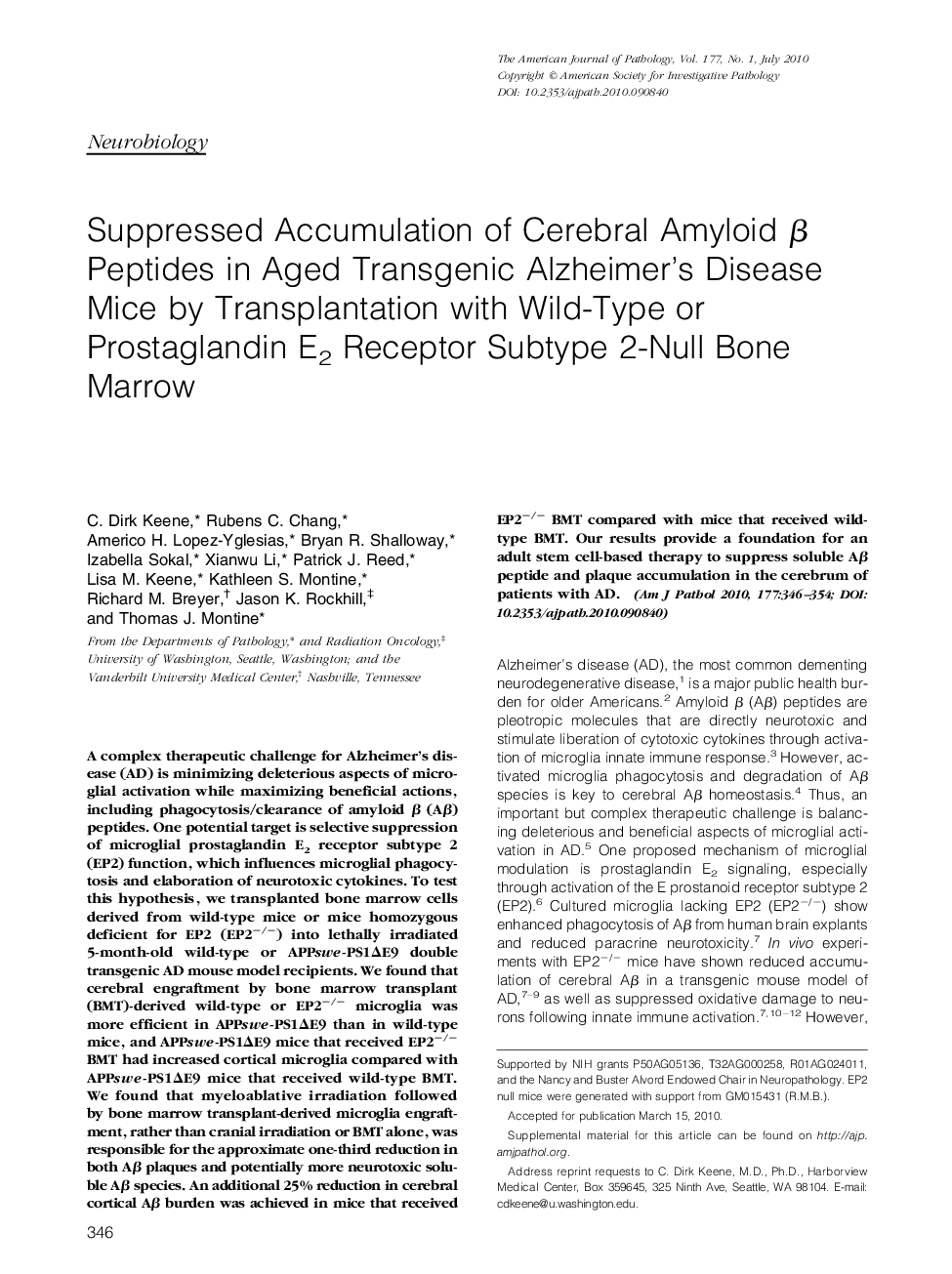| Article ID | Journal | Published Year | Pages | File Type |
|---|---|---|---|---|
| 5935306 | The American Journal of Pathology | 2010 | 9 Pages |
Abstract
A complex therapeutic challenge for Alzheimer's disease (AD) is minimizing deleterious aspects of microglial activation while maximizing beneficial actions, including phagocytosis/clearance of amyloid β (Aβ) peptides. One potential target is selective suppression of microglial prostaglandin E2 receptor subtype 2 (EP2) function, which influences microglial phagocytosis and elaboration of neurotoxic cytokines. To test this hypothesis, we transplanted bone marrow cells derived from wild-type mice or mice homozygous deficient for EP2 (EP2â/â) into lethally irradiated 5-month-old wild-type or APPswe-PS1ÎE9 double transgenic AD mouse model recipients. We found that cerebral engraftment by bone marrow transplant (BMT)-derived wild-type or EP2â/â microglia was more efficient in APPswe-PS1ÎE9 than in wild-type mice, and APPswe-PS1ÎE9 mice that received EP2â/â BMT had increased cortical microglia compared with APPswe-PS1ÎE9 mice that received wild-type BMT. We found that myeloablative irradiation followed by bone marrow transplant-derived microglia engraftment, rather than cranial irradiation or BMT alone, was responsible for the approximate one-third reduction in both Aβ plaques and potentially more neurotoxic soluble Aβ species. An additional 25% reduction in cerebral cortical Aβ burden was achieved in mice that received EP2â/â BMT compared with mice that received wild-type BMT. Our results provide a foundation for an adult stem cell-based therapy to suppress soluble Aβ peptide and plaque accumulation in the cerebrum of patients with AD.
Related Topics
Health Sciences
Medicine and Dentistry
Cardiology and Cardiovascular Medicine
Authors
C. Dirk Keene, Rubens C. Chang, Americo H. Lopez-Yglesias, Bryan R. Shalloway, Izabella Sokal, Xianwu Li, Patrick J. Reed, Lisa M. Keene, Kathleen S. Montine, Richard M. Breyer, Jason K. Rockhill, Thomas J. Montine,
